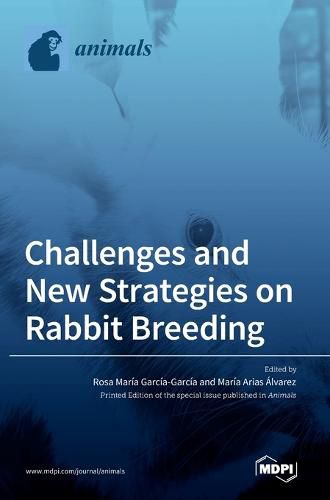Readings Newsletter
Become a Readings Member to make your shopping experience even easier.
Sign in or sign up for free!
You’re not far away from qualifying for FREE standard shipping within Australia
You’ve qualified for FREE standard shipping within Australia
The cart is loading…






This title is printed to order. This book may have been self-published. If so, we cannot guarantee the quality of the content. In the main most books will have gone through the editing process however some may not. We therefore suggest that you be aware of this before ordering this book. If in doubt check either the author or publisher’s details as we are unable to accept any returns unless they are faulty. Please contact us if you have any questions.
Rabbit livestock is especially important in the Mediterranean area and in the semi-arid zones of Africa, Asia, and America, representing a valuable alternative source of good animal protein of high quality (low fat and low cholesterol). However, rabbit husbandry should adapt to be a competitive and sustainable sector. In addition, it must maintain a balance between rabbit welfare, customer demands, and breeder requirements. Then, improvement in breeding systems is needed and may involve avoiding hormones and antibiotics in rabbit management; enhancing the efficiency of reproductive procedures such as artificial insemination systems and freezing of semen and embryos; extending the productive lifespan of does; improving genetic selection systems; and adjusting nutritional systems to optimize the physiological status of animals and the immune response. This Special Issue concerns all these challenges in increasing rabbit productivity and sustainability.
$9.00 standard shipping within Australia
FREE standard shipping within Australia for orders over $100.00
Express & International shipping calculated at checkout
This title is printed to order. This book may have been self-published. If so, we cannot guarantee the quality of the content. In the main most books will have gone through the editing process however some may not. We therefore suggest that you be aware of this before ordering this book. If in doubt check either the author or publisher’s details as we are unable to accept any returns unless they are faulty. Please contact us if you have any questions.
Rabbit livestock is especially important in the Mediterranean area and in the semi-arid zones of Africa, Asia, and America, representing a valuable alternative source of good animal protein of high quality (low fat and low cholesterol). However, rabbit husbandry should adapt to be a competitive and sustainable sector. In addition, it must maintain a balance between rabbit welfare, customer demands, and breeder requirements. Then, improvement in breeding systems is needed and may involve avoiding hormones and antibiotics in rabbit management; enhancing the efficiency of reproductive procedures such as artificial insemination systems and freezing of semen and embryos; extending the productive lifespan of does; improving genetic selection systems; and adjusting nutritional systems to optimize the physiological status of animals and the immune response. This Special Issue concerns all these challenges in increasing rabbit productivity and sustainability.